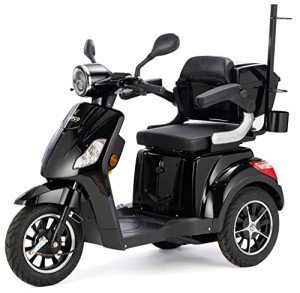Mobility Scooters: A Comprehensive Guide
Mobility scooters have actually become a vital mode of transport for many people dealing with mobility challenges. This article checks out the various aspects of mobility scooters, including their types, advantages, features, and a guide for potential buyers.
Understanding Mobility Scooters
Mobility scooters are electrically powered devices created for individuals with limited mobility. They offer a way of transport for people who may have problem strolling but still wish to maintain their self-reliance. They are available in different designs and features to accommodate a wide variety of requirements.
Types of Mobility Scooters
Mobility scooters can generally be classified into three primary types:
| Type | Description | Best For |
|---|---|---|
| Compact Scooters | These are small and lightweight, ideal for indoors and short journeys. | Users with restricted storage space or those who take a trip often. |
| Mid-size Scooters | A balance in between portability and stability, ideal for both indoor and outdoor usage. | Those who need to cover a range of terrains. |
| Durable Scooters | Large and robust, designed for rugged outside use and much heavier individuals. | Users requiring extra weight capability or going off-road. |
Key Features of Mobility Scooters
The choice of mobility scooter frequently depends on the features that line up with individual requirements. Here are a few of the key functions to think about:
- Weight Capacity: Mobility scooters include different weight limits. It is crucial to choose a scooter that can sufficiently support the user's weight.
- Range: The range a scooter can travel on a single charge varies. Depending upon user requirements, one might select scooters with a variety of as much as 40 miles.
- Speed: Most mobility scooters can reach speeds between 4 to 8 mph. Consider what speed is comfortable and safe for the intended environment.
- Turning Radius: A compact turning radius is necessary for indoor usage, enabling much easier navigation in tight areas.
- Battery Type: The type of batteries utilized can impact the scooter's performance. Lead-acid and lithium-ion batteries are the most typical.
Benefits of Using Mobility Scooters
The advantages of mobility scooters extend beyond simply transportation. Some essential benefits include:
- Independence: Users can browse their environment without relying on caregivers, promoting independence and self-esteem.
- Health Benefits: Using a scooter can motivate outside activity, leading to physical and mental health improvements by lowering sensations of isolation.
- Convenience: Scooters can quickly be run in numerous environments, whether inside, in shopping malls, or outdoors.
Crucial Considerations When Buying a Mobility Scooter
When buying a mobility scooter, a number of factors to consider can assist guarantee that you choose the ideal model:
Assess Individual Needs:
- Mobility level: Consider just how much assistance the person will need.
- Range of use: Determine where the scooter will primarily be utilized (inside your home, outdoors, on rough surfaces, and so on).
Test Drive:
- Always test drive several models to discover a suitable fit. Focus on convenience, ease of steering, and the scooter's responsiveness.
Review Safety Features:
- Look for scooters with sufficient security functions like lights, signs, and anti-tip styles.
Check Warranty and Service Options:
- A trustworthy guarantee and available service options are vital for long-term usage.
Frequently Asked Questions about Mobility Scooters
1. How quickly do related internet page go?Mobility scooters usually have speeds varying from 4 to 8 miles per hour, with most developed for security rather than high-speed travel. 2. Exist weight restrictions on mobility scooters?Yes, mobility
scooters include particular weight limitations, often varying from
250 pounds to over 500 pounds, depending on the model. 3. Can mobility scooters be utilized indoors?Certain designs, particularly compact scooters, are particularly designed for
indoor usage and are much easier to steer in tight areas. 4. How frequently do the batteries need to be replaced?Battery life can differ based upon usage, however normally, with correct care, batteries may last in between 1 to 3 years before requiring replacement
. 5. Are mobility scooters covered by insurance?Coverage can vary, however some insurance coverage plans, consisting of Medicare and Medicaid, might cover part of the expense. It's suggested to talk to private insurance companies. Mobility scooters serve as a
valuable tool for many people, enabling them to keep
their freedom and independence. By comprehending the different types and features of mobility scooters, individuals can make informed choices tailored to their specific requirements.
Whether used for errands, mingling, or leisurely activities, mobility scooters can improve the lifestyle for those with mobility constraints. Purchasing a mobility scooter is a decision that can substantially impact a person's life. Therefore, individuals should thoroughly examine their alternatives and choose a model that best lines up with their way of life and mobility requirements
.

